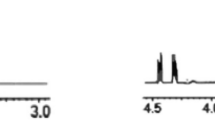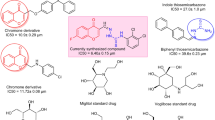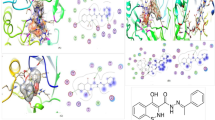Abstract
Haas and Stadtman1 separated an apricot concentrate (30 per cent solids) into cationic, anionic and neutral fractions and showed that browning occurred when any two fractions were combined and stored at 57° C. The reactions of individual cations, anions and neutral compounds in freeze-dried apricot puriée stored at 25° C. and 70 per cent relative humidity (79 per cent solids) have now been studied. After sixteen months/this material was a mid-brown colour. It contained 1-deoxy-1-(N-amino-acid)-fructoses2 and traces of 2-deoxy-2-(N-amino-acid)-glucoses3, together with sucrose, glucose and (traces of) fructose half-esters of malic and citric acids. These compounds replaced almost quantitatively the apparent losses of free amino-acids and malic and citric acids. After allowing for these reactions, there was a loss of 11 m.moles of glucose and 8 m.moles of fructose per 100 gm. fruit solids. It appears that, at this relatively early stage of browning, the coloured compounds were formed from sugars without the incorporation of any significant amount of amino-acid or organic acid residues. If the 1-deoxy-1-(N-amino-acid)-fructoses were intermediates in browning, subsequent reactions must have included the release of the amino-acid4. The behaviour of glucose-6-phosphate5 suggests that the malic and citric acid esters may also be important intermediates in browning.
This is a preview of subscription content, access via your institution
Access options
Subscribe to this journal
Receive 51 print issues and online access
$199.00 per year
only $3.90 per issue
Buy this article
- Purchase on SpringerLink
- Instant access to full article PDF
Prices may be subject to local taxes which are calculated during checkout
Similar content being viewed by others
References
Haas, V. H., and Stadtman, E. R., Indust. Eng. Chem., 41, 983 (1949).
Gottschalk, A., Biochem. J., 52, 455 (1952). Hodge, J. E., and Hist, C. E., J. Amer. Chem. Soc., 75, 316 (1953).
Carson, J. F., J. Amer. Chem. Soc., 76, 1881 (1954).
Gottschalk, A., and Partridge, S. M., Nature, 165, 684 (1950). Hodge, J. E., J. Agric. Food Chem., 1, 928 (1953).
Schwimmer, S., and Olcott, H. S., J. Amer. Chem. Soc., 75, 4885 (1953).
Partridge, S. M., and Brimley, R. C., Biochem. J., 51, 628 (1952).
Anet, E. F. L. J., and Reynolds, T. M., Aust. J. Chem., 8, 267, 280 (1955).
Author information
Authors and Affiliations
Rights and permissions
About this article
Cite this article
ANET, E., REYNOLDS, T. Reactions between Amino-Acids, Organic Acids and Sugars in Freeze-dried Apricots. Nature 177, 1082–1083 (1956). https://doi.org/10.1038/1771082c0
Issue date:
DOI: https://doi.org/10.1038/1771082c0
This article is cited by
-
Bildung und Stabilit�t von Amadori-Verbindungen in wasserarmen Lebensmitteln
Zeitschrift f�r Lebensmittel-Untersuchung und -Forschung (1979)
-
L�sliche Kohlenhydrate in Rohlakritzen(Succus Liquiritiae)
Zeitschrift f�r Lebensmittel-Untersuchung und -Forschung (1973)
-
Fructoselysin als wichtigstes Reaktionsprodukt von Lysin mit Glucose bei Hitzesch�digung von Lebens- und Futtermitteln
Zeitschrift f�r Lebensmittel-Untersuchung und -Forschung (1968)



